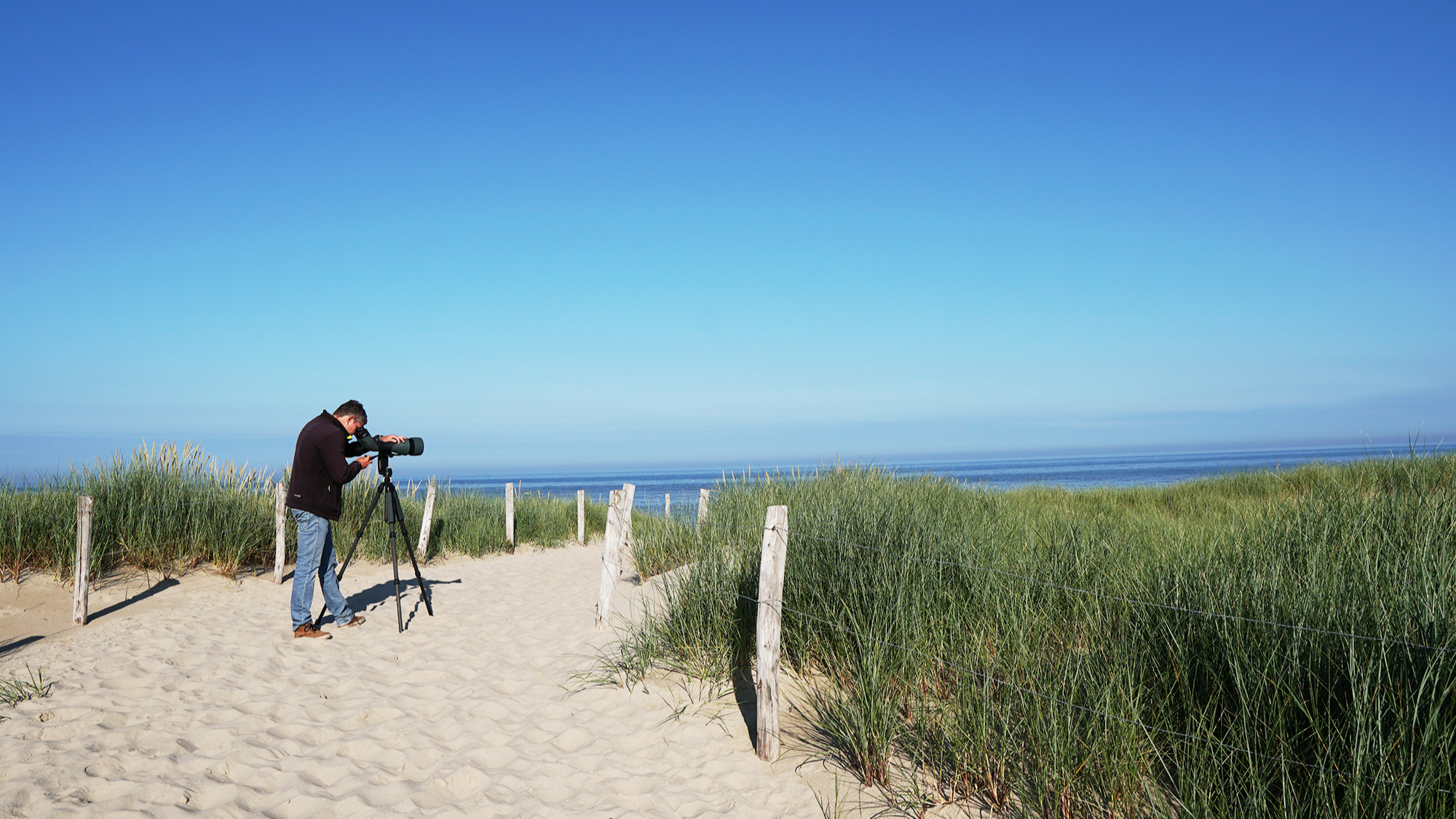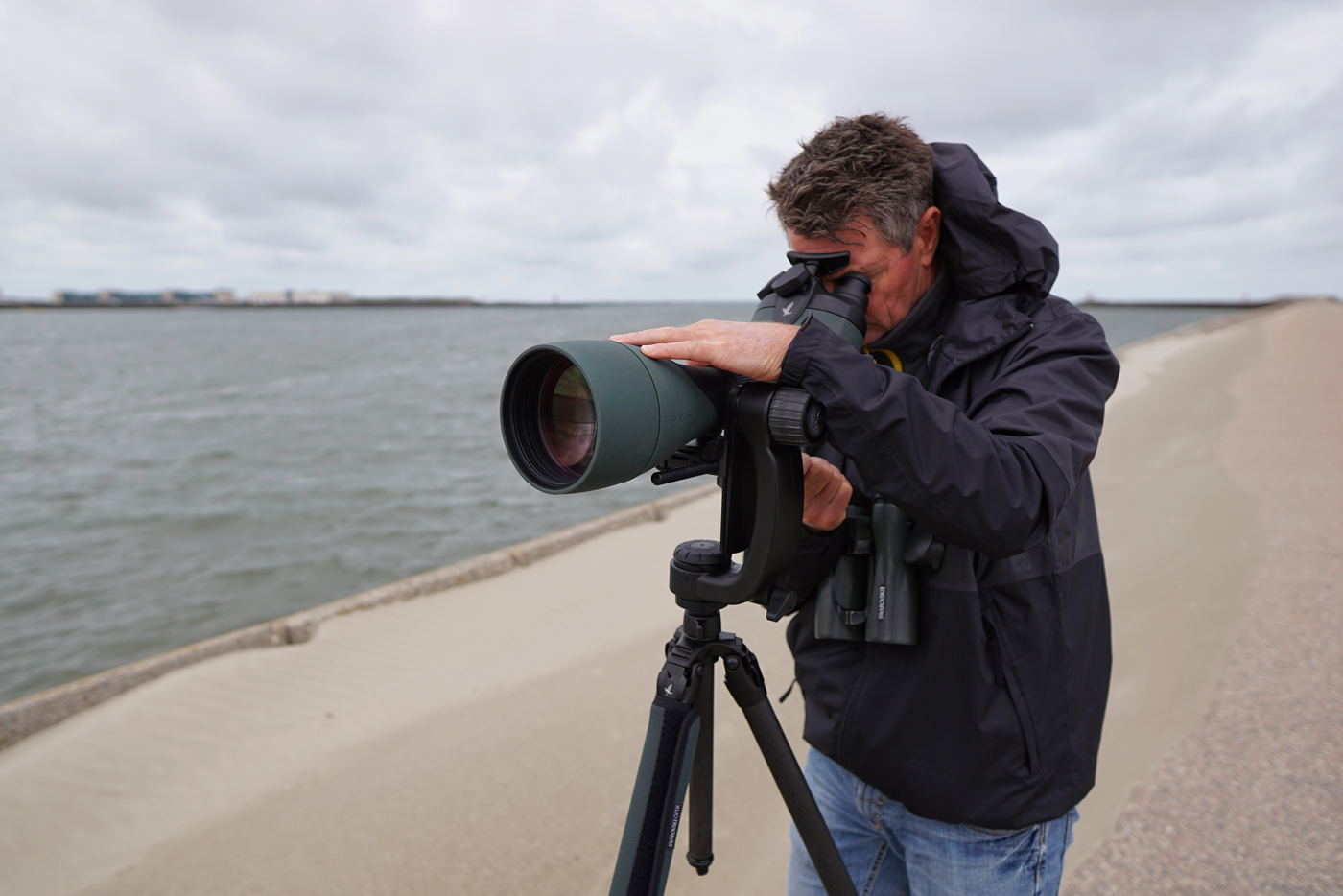Nils van Duivendijk and Mark Collier went birding on the Dutch coastline with the 115-mm objective module. Join them on their adventure.
Exploring the North-Holland Dune Reserve
We met up on the Dutch coast close to the North-Holland Dune Reserve and began the day with some seawatching. Despite being dull and overcast, the strong onshore winds would hopefully bring birds closer to shore. We started by checking the waters around the pier, which can hold good numbers of birds under the right conditions. Today, the waters were quiet although the rocks around a small island held more of interest.
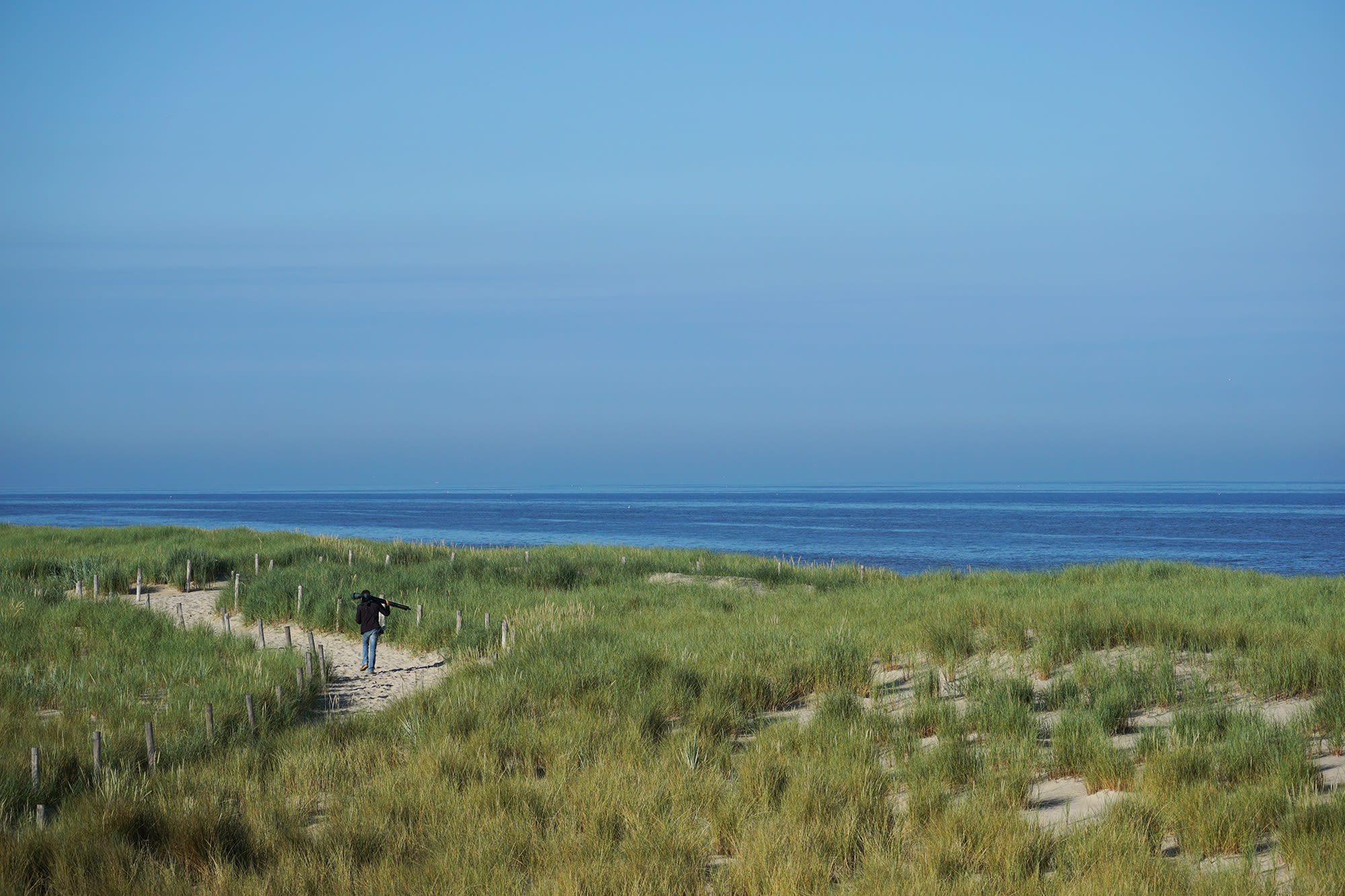
How gull-able are you?
Amongst a group of roosting Gulls a lone second-year Mediterranean Gull (Ichthyaetus melanocephalus) stood on a tall rock just above the crashing waves; noticeable by its dark mask, blackish legs and rather tick bill in which the reddish colour had just started to appear. It showed a mix of grey adult-type and dark retained juvenile feathers, typical for all smaller gulls of this age in this time of the year.
Camouflaged Cormorants
Further along a line of Cormorants (Phalacrocorax carbo) stood almost camouflaged against the dark rocks. Scanning along the line with the 115-mm objectives we could distinguish a few lighter birds between them. The first couple were clearly juvenile cormorants with their paler bellies and evenly fresh overall plumage, but the last was clearly smaller, more evenly coloured but with more obvious wing-bars and had a thinner, yellowish bill. Closer examination of the head revealed feathering between the eye and bill and a sharp corner at the gape line towards the base of the lower mandible, showing this was a Shag (Phalacrocorax aristotelis); a fairly uncommon visitor along the Dutch coast.
“THE BRIGHTNESS AND RICH CONTRAST OF THE 115-MM OBJECTIVE ALLOWS SUBTLE DIFFERENCES IN COLOURS TO BE DISTINGUISHED, EVEN ON DULL DAYS.”
We continued towards the beach to see what was flying further from shore. As we walked over the ridge of the dune we were buffeted by the strong south-westerly wind. A Meadow Pipit (Anthus pratensis) called as it shot past before diving into the grass on the leeward side of the dune. We found shelter just below the ridge, and although we were quite far from shore, we would benefit from the height of our viewing point.
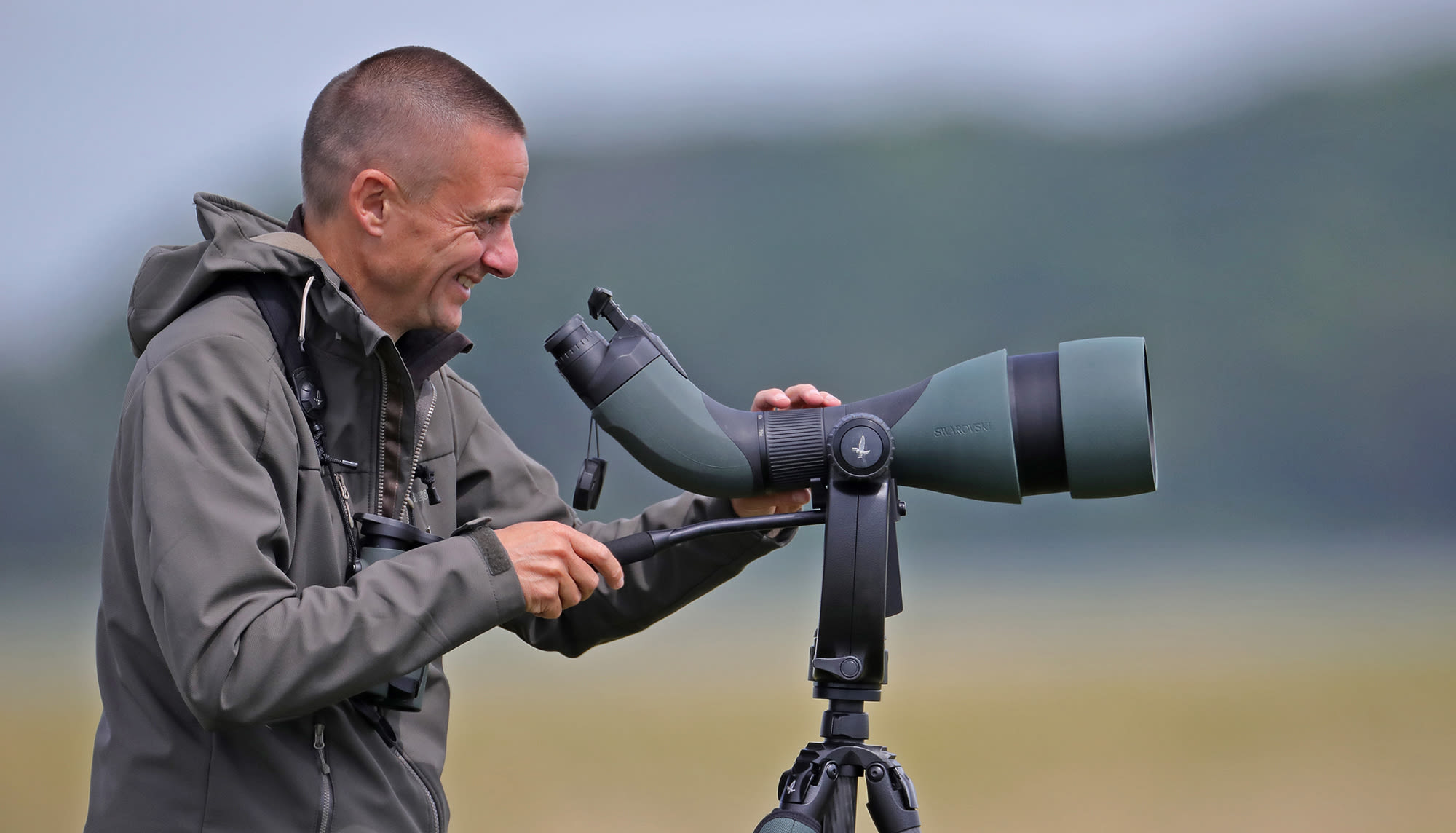
Ducks, ducks, ducks
Scanning the rough sea with binoculars we could see lines of Ducks passing between the windblown crests of the waves. Viewing through our 115-mm objective modules we were transported into their world. The lines of dark ducks became Common Scoters (Melanitta nigra) making their way along the coast. Most were males with silvery primaries contrasting their all dark plumages and yellow flash on the bill. A few second-year males could be picked out by their pale bellies. The pale cheeks and brown cap revealed a few lighter coloured females amongst them. Through the BTX, Nils picked up a bird with clear white secondaries, a Velvet Scoter (Melanitta fusca)! Despite the overcast conditions the superbly bright image gifted by the 115-mm objective module revealed the faint ear patch and lore and slightly paler colour of a female.
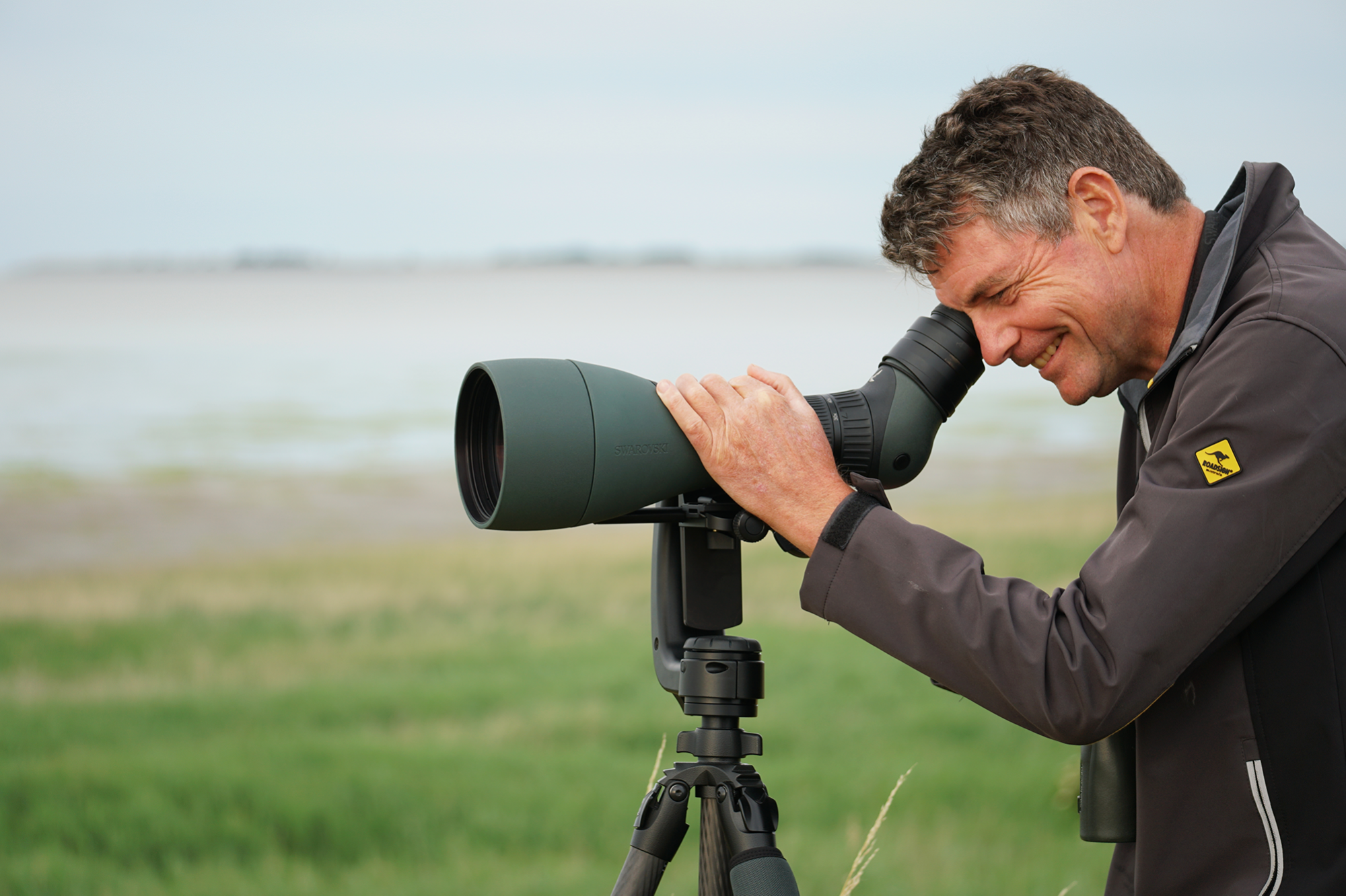
Waders, curlews, and whimbrels
As we continued to watch through the 115-mm objective modules, three Waders came into view. As they battled against the wind we could see a clear size difference in one of the birds. They dropped low over the water and disappeared behind the waves. Nevertheless, the immense image of the 115-mm modules made following the birds easy. As they rose from behind another wave some distance further up, we could see the white back contrasting with the mid-brown upper parts. The two larger birds showed darker wing tips and the distinctive long bill of Curlews (Numenius arquata). As the smaller bird twisted in the wind the shorter bill, densely patterned underwing and darker crown of a Whimbrel (Numenius phaeopus) were clearly visible before it vanished behind another wave.

As is often the case in birding, we only had brief views of the bird but thanks to the incredible image of the 115-mm objective these fleeting views were certainly memorable.
“SEAWATCHING WITH THE 115-MM OBJECTIVE MODULE GIVES AN UNRIVALLED IMAGE ALLOWING DETAILS TO BE SEEN EVEN IN FLAT LIGHT.”












